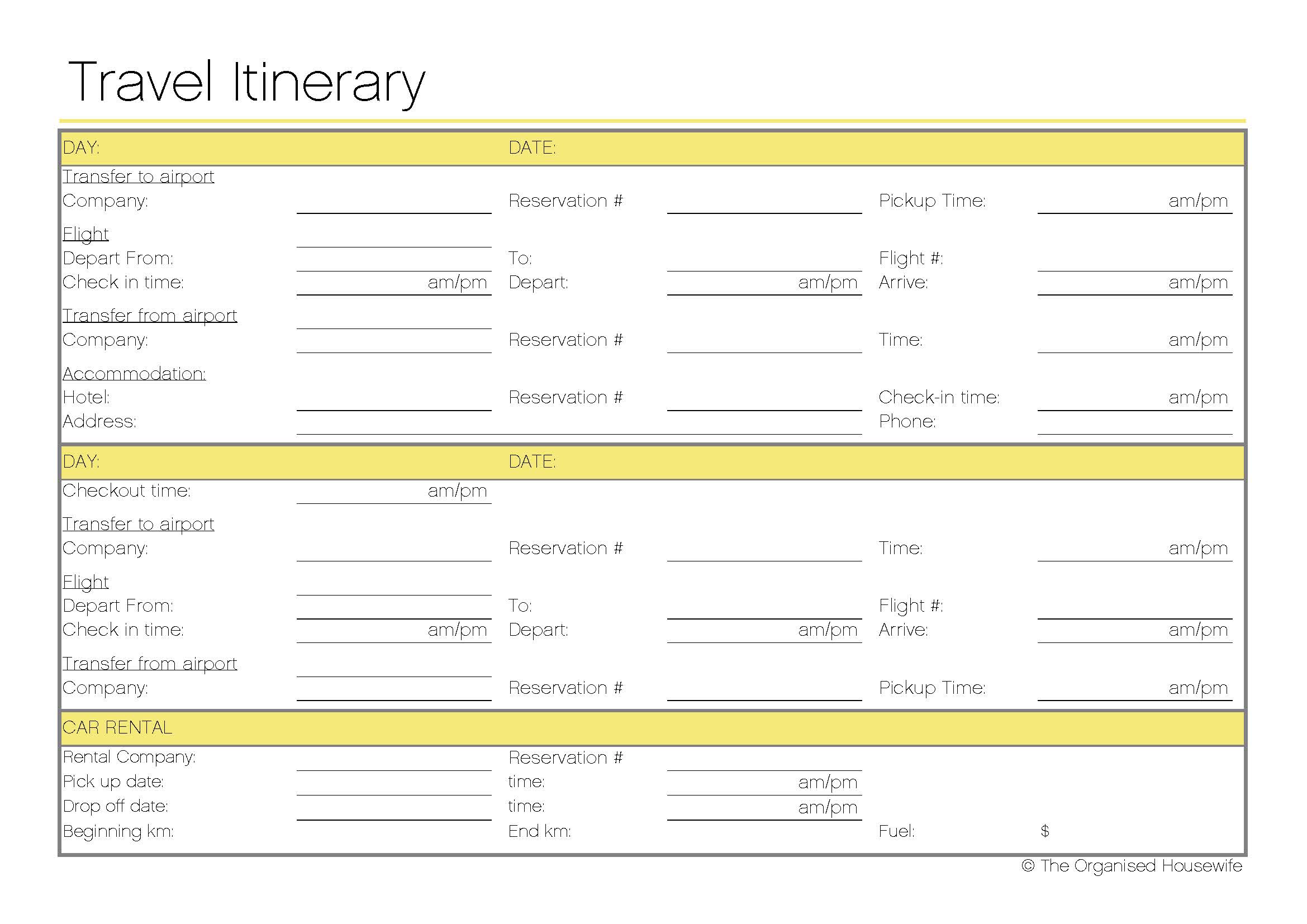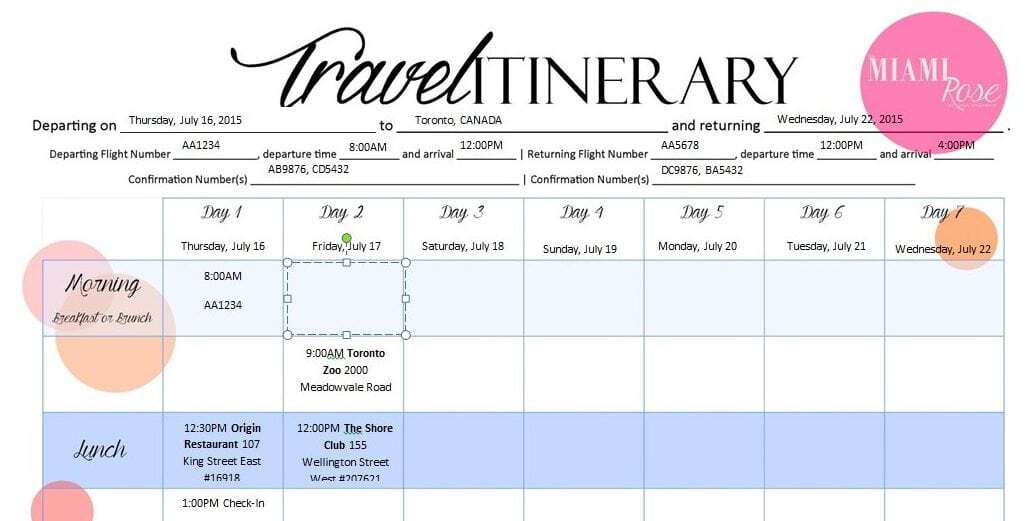As How to plan a trip itinerary takes center stage, this opening passage beckons readers with bloomberg author style into a world crafted with good knowledge, ensuring a reading experience that is both absorbing and distinctly original.
Within this meticulously curated guide, travelers will embark on a journey of discovery, unlocking the secrets to crafting an itinerary that seamlessly blends their aspirations with practical considerations. From setting clear objectives to navigating transportation options and managing budgets, every aspect of trip planning is illuminated with clarity and precision.
Planning Framework: How To Plan A Trip Itinerary
A well-defined plan is essential for a successful trip. This involves setting clear goals and objectives, determining the trip’s duration, budget, and travel style, and researching destinations and activities that align with your aspirations.
Begin by identifying the primary purpose of your trip. Are you seeking relaxation, adventure, cultural immersion, or a combination thereof? Once you have established your goals, you can tailor your itinerary to match your interests.
Trip Duration
Consider the time you have available for travel. Short trips are ideal for weekend getaways or exploring a single destination, while longer trips allow for more extensive exploration and multiple destinations.
Budget
Determine a realistic budget that includes all expenses, such as transportation, accommodation, food, activities, and souvenirs. Research costs associated with your desired destinations and activities to avoid unexpected expenses.
Travel Style
Identify your preferred travel style. Do you prefer organized tours, independent travel, or a combination of both? Consider your comfort level with planning and navigating unfamiliar environments.
Destination and Activity Research
Research potential destinations and activities that align with your goals and interests. Utilize travel guides, online resources, and social media to gather information and reviews. Consider factors such as climate, attractions, cultural experiences, and safety when selecting your destinations.
Budget Management

Establishing a realistic budget is crucial for a successful trip. It ensures that you have a clear understanding of your financial limitations and helps you avoid overspending. To create a comprehensive budget, consider all potential expenses, including accommodation, transportation, food, activities, and incidentals. Research costs thoroughly and allocate funds accordingly.
Once you have a budget in place, it’s essential to track your expenses meticulously. This will help you stay within your limits and identify areas where you can save. Keep receipts, use budgeting apps, or maintain a spreadsheet to monitor your spending. Additionally, be mindful of currency exchange rates and factor in any potential fees or commissions associated with foreign transactions.
Saving Money on Accommodation
- Consider budget-friendly options such as hostels, guesthouses, or vacation rentals.
- Book accommodations in advance to secure discounts and promotions.
- Negotiate rates directly with hotel staff or use online travel agencies to compare prices.
- Look for discounts and deals offered by loyalty programs or travel websites.
Saving Money on Transportation, How to plan a trip itinerary
- Utilize public transportation, such as buses or trains, which are often more affordable than taxis or rental cars.
- Purchase transportation passes or multi-day tickets to save on individual fares.
- Consider ride-sharing services or carpooling to reduce transportation costs.
- Book flights and train tickets in advance to take advantage of early-bird discounts.
Saving Money on Activities
- Research free or low-cost activities in your destination, such as visiting museums or exploring parks.
- Look for discounts on tours and attractions through online booking platforms or local tourist offices.
- Consider purchasing a city pass, which often provides access to multiple attractions at a reduced price.
- Negotiate with tour operators or activity providers to secure a better deal.
Health and Safety

Ensuring your health and safety while traveling is paramount. Prioritize vaccinations and medications recommended for your destination. Pack a comprehensive first-aid kit for minor emergencies.
Staying Safe in Unfamiliar Environments
- Be aware of your surroundings and trust your instincts.
- Avoid isolated areas, especially at night.
- Keep valuables hidden and make copies of important documents.
- Learn basic local phrases to communicate with locals.
Avoiding Scams and Respecting Local Customs
- Be cautious of unsolicited offers or requests for assistance.
- Respect local customs and dress codes to avoid offense.
- Avoid engaging in illegal activities or using substances.
Importance of Travel Insurance and Emergency Contacts
Obtain comprehensive travel insurance to cover medical expenses, lost luggage, and emergency situations. Keep emergency contact information easily accessible for family or friends back home.
Conclusive Thoughts

In the realm of travel, meticulous planning serves as the cornerstone of unforgettable experiences. This comprehensive guide has equipped you with the knowledge and strategies to craft an itinerary that not only meets your expectations but surpasses them. Embrace the joy of exploration, knowing that every step of your journey has been carefully considered and meticulously arranged. Bon voyage, fellow travelers, and may your adventures be filled with cherished memories.
Detailed FAQs
How far in advance should I start planning my itinerary?
The ideal timeframe for itinerary planning varies depending on the complexity of your trip. For international journeys or those involving multiple destinations, it’s wise to begin several months in advance. For shorter, domestic trips, a few weeks of planning should suffice.
What are some common mistakes to avoid when planning an itinerary?
Overpacking, underestimating travel time, and neglecting to research destinations thoroughly are common pitfalls. Additionally, failing to consider your budget constraints and interests can lead to an itinerary that doesn’t align with your needs.
How can I make my itinerary more flexible?
Build in buffer time between activities, consider alternative transportation options, and leave some unscheduled time for spontaneous discoveries. This flexibility will allow you to adapt to unexpected circumstances and maximize your enjoyment.




